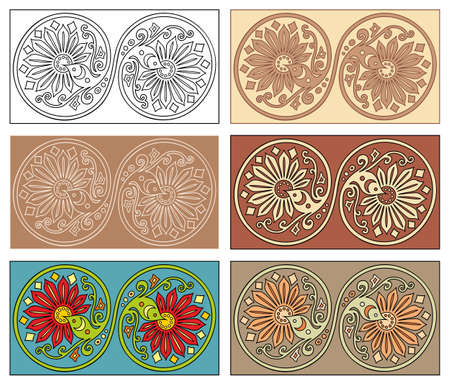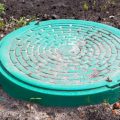Understanding the Importance of Rain Barrels in the UK Climate
If you’ve ever spent a rainy afternoon peering out at your garden, you’ll know how precious each drop can be during those unpredictable British summers. Here in the UK, where drizzle and downpours are part of our national identity, harnessing rainwater isn’t just practical—it’s almost poetic. Installing a rain barrel is a simple yet effective way to capture this free resource, transforming every shower into an opportunity to nurture your garden and support local wildlife. By collecting rainwater, not only do you reduce your reliance on mains water (and perhaps notice a pleasing dip in your water bills), but you also contribute to the classic British tradition of sustainable living. Whether you have a city courtyard or a sprawling cottage plot, embracing rainwater harvesting means you’re caring for your patch of earth—and teaching little ones the value of mindful stewardship. As we explore materials, sizes, and styles in the following sections, keep in mind how this eco-friendly choice fits beautifully into both family life and our collective appreciation for nature’s gifts.
Choosing the Right Material: Plastic, Metal, or Wooden Barrels
When it comes to selecting the ideal rain barrel for your UK garden, the material you choose plays a key role in both functionality and aesthetics. Each option—plastic, metal, or wood—brings its own character to your outdoor space, much like how a family member’s personality adds colour to daily life. Let’s take a closer look at their unique benefits and drawbacks, considering both modern needs and traditional British charm.
| Material | Pros | Cons | Best for Garden Styles |
|---|---|---|---|
| Plastic | Lightweight, affordable, low maintenance, resistant to rust and rot | Can look less natural, may degrade with prolonged sun exposure | Contemporary gardens, small urban spaces |
| Metal (usually galvanised steel) | Durable, stylish industrial look, recyclable, good for cold climates | Heavier, can rust over time if coating wears off, pricier than plastic | Cottage gardens with a twist, classic British allotments |
| Wooden (often oak barrels) | Traditional aesthetic, blends well with plants and historic homes, naturally insulated | Requires more upkeep (can rot if not maintained), heavier to move | Quintessential English country gardens, period properties |
A little tip inspired by nature: Just as every plant thrives in its preferred soil and light conditions, your garden will flourish when you match your rain barrel material to your lifestyle and garden style. If your children love helping in the garden, lightweight plastic barrels are easy to manage together. For those who adore classic British landscapes or have listed buildings, wooden barrels add timeless charm—though they do need regular care. And if you enjoy mixing old with new or want something robust for years to come, metal might be your best companion.

3. Finding the Perfect Size for British Gardens
Choosing the right size rain barrel for your UK garden is a bit like picking just the right pair of wellies—you want something that fits perfectly, whether you have a petite patio or a sprawling cottage plot. British weather, with its famously unpredictable showers and sudden downpours, means even a small space can collect a surprising amount of rainwater. For urban gardens or cosy courtyards, a compact barrel around 100–150 litres often does the trick, tucking neatly beneath a drainpipe and providing enough water for pots and planters. If you’re lucky enough to nurture an allotment or generous flower borders, barrels in the 200–300 litre range will help you capture more of those precious drops during wetter months.
Consider how much roof area drains into your chosen spot—a larger roof means more runoff to collect! In true British fashion, it’s wise to plan for both drizzle-filled weeks and the occasional dry spell by selecting a barrel slightly bigger than you think you’ll need. And if you have a family eager to join in watering chores, multiple smaller barrels dotted around the garden can make filling watering cans child’s play. Just as every garden has its own personality, finding the perfect size rain barrel is about matching your unique outdoor space—and the ever-changing UK skies—with practical wisdom and a dash of green-fingered anticipation.
4. Styles and Designs: Blending Practicality with British Charm
Choosing a rain barrel for your UK garden is not just about practicality; it’s also about celebrating the unique character of your outdoor space. Whether you tend to a charming cottage plot, a smart city terrace, or an expansive suburban lawn, the style and design of your water butt can enhance—or even elevate—the overall atmosphere of your garden.
Classic vs Contemporary: Finding Your Fit
From timeless traditional barrels reminiscent of English country gardens to sleek, contemporary designs perfect for modern urban spaces, there is something for every taste. Consider these popular styles:
| Style | Features | Best For |
|---|---|---|
| Wooden Effect | Mimics oak barrels, often made from durable plastic with a rustic finish. | Cottage gardens, period homes |
| Slimline/Column | Narrow, tall profiles; fits discreetly against walls or in small spaces. | Urban balconies, compact gardens |
| Modern Minimalist | Smooth lines, neutral colours—think charcoal grey or deep green. | Contemporary landscapes, design-led spaces |
| Decorative Pots | Doubles as a planter; blends function with floral beauty. | Cottage borders, family play areas |
| Traditional Barrel | Classic round shape, sometimes genuine wood or metal bands. | Larger lawns, heritage homes |
Colour and Placement: A Subtle Statement
When choosing a colour, consider what will blend best with your garden’s palette. Deep greens and browns are subtle and natural, while black or slate grey offer a modern twist. Placement matters too: nestle your barrel near downpipes but keep it accessible for watering cans or hoses. For family gardens, ensure it’s safely anchored and has a secure lid to keep little ones safe.
A Touch of British Whimsy
If you love a dash of fun, look for barrels with decorative motifs—think Union Jacks, wildlife shapes, or even classic red postbox designs. These touches can spark conversation at summer garden parties or add cheer on rainy days.
Inspiring Young Gardeners
Inviting children to help pick out a rain barrel—perhaps one shaped like their favourite animal—can turn water conservation into an engaging family project. Together, you’ll be nurturing both plants and curiosity in true British style.
5. Essential Features: Taps, Lids, and Stands for Everyday Ease
Choosing a rain barrel for your UK garden isn’t just about size or style—the right features can make all the difference, especially for busy families looking to encourage little ones to help out with watering or simply enjoy some fun splashing on a sunny afternoon. Let’s explore the must-have elements that transform rainwater collection into a safe, simple, and enjoyable daily routine.
Taps: Easy Access for Every Family Member
A well-placed, sturdy tap is an essential feature for any family-friendly rain barrel. Look for barrels with child-friendly taps that are easy to turn—perfect for tiny hands wanting to fill up watering cans or rinse muddy boots after a day of outdoor play. Brass or high-quality plastic taps resist rust and ensure long-lasting use. Positioning is key too; opt for taps set low enough so even the youngest gardeners can reach them without struggle.
Lids: Keeping Water Safe and Clean
Lids do more than keep out leaves—they also protect curious children and pets from accidental tumbles. Choose a rain barrel with a tight-fitting, lockable lid to keep water clean and prevent unwanted visitors (like mosquitoes or neighbourhood cats) from getting in. Some barrels offer mesh screens under the lids for extra filtration, keeping your harvested rainwater as pure as possible for both plants and playful splashes.
Stands: Elevating Convenience
A sturdy stand is often overlooked but can be a real game-changer. By raising your rain barrel off the ground, you’ll make it easier to fit watering cans under the tap—no awkward tilting required! Stands also help improve water flow by increasing gravity pressure, making everyday watering less of a chore and more of a shared family experience. If you’re crafting a wildlife-friendly garden, stands also help keep the area tidy and accessible for everyone.
Family Tip:
When selecting features, think about your family’s daily routines. Will little ones want to join in? Are you hoping to make watering quick after school or work? The right combination of tap, lid, and stand will ensure everyone—from green-fingered grandparents to aspiring young gardeners—can safely and easily access fresh rainwater no matter what the British weather brings.
6. Tips on Installation and Maintenance for a Family-Friendly Garden
Making Rain Barrel Setup Safe and Enjoyable for Everyone
Installing a rain barrel in your UK garden isn’t just about saving water—its also an opportunity to bring the family together for some hands-on learning! Choose a flat, stable surface such as paving slabs or compacted gravel to prevent tipping, especially with energetic children around. Position your barrel near a downpipe for maximum efficiency but away from play areas to avoid accidental bumps. Invite little helpers to assist with simple tasks like placing the stand or tightening the tap—just be sure all tools and sharp objects are out of reach.
Maintenance Made Simple: Keep It Clean, Keep It Fun
Regular maintenance ensures your rain barrel stays safe and effective. Check the lid frequently—secure, child-proof lids are essential to prevent curious fingers or small toys from ending up inside. Make cleaning a family event by emptying and scrubbing the barrel at least once a season; use natural cleaning agents like vinegar to keep things eco-friendly and kid-safe. Encourage children to help rinse with watering cans, turning chores into playful teamwork.
Water Quality and Wildlife: A Teachable Moment
Use mesh screens over openings to keep leaves and insects out while teaching young gardeners about the importance of clean water for plants. Remind everyone that stored rainwater is best used for flowers, shrubs, and lawns—not drinking or washing hands—to reinforce healthy habits.
Seasonal Care: Preparing for British Weather
As seasons change, show your family how to prepare the barrel for winter by disconnecting it before frost arrives and storing it upside down to prevent cracks. Involve children in checking for leaks or blockages after heavy rain, turning these simple checks into nature observation moments.
By involving your family every step of the way, not only do you nurture your garden—you nurture young minds too, helping them blossom alongside your plants!


